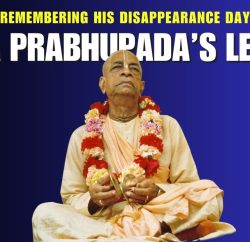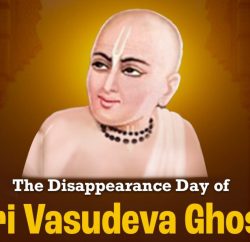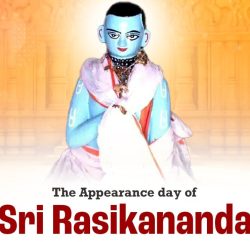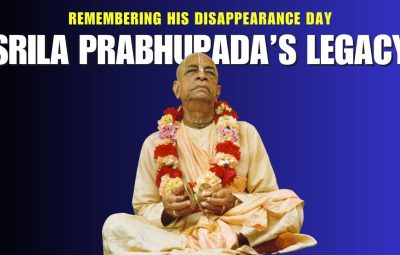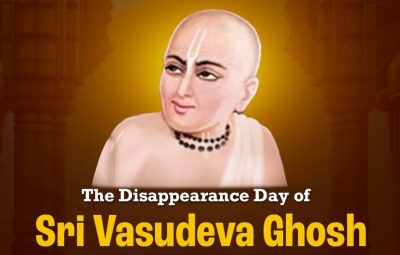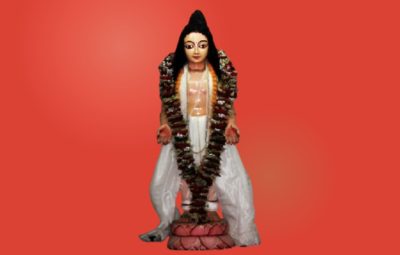Srila Bhaktisiddhanta Sarasvati Thakura writes in his Anubhasya,
Pandita Dhananjaya was a resident of the village in Katwa named Sitala. He was one of the twelve gopalas. His former name, according to the Gaura-gaṇoddeśa-dīpikā (127), was Vasudama.
Sitala-grama is situated near the Mangalakota police station and Kaicara post office in the district of Burdwan.

On the narrow railway from Burdwan to Katwa is a railway station about nine miles from Katwa known as Kaicara. One has to go about a mile northeast of this station to reach Sitala. The temple was a thatched house with walls made of dirt. Some time ago, the zamindars of Bajaravana Kabasi, the Mulliks, constructed a big house for the purpose of a temple, but for the last sixty-five years, the temple has been broken down and abandoned.
The foundation of the old temple is still visible. There is a tulasi pillar near the temple, and every year during the month of Kartika (October-November), the disappearance day of Dhananjaya is observed. It is said that for some time Pandita Dhananjaya was in a sankirtana party under the direction of Sri Chaitanya Mahaprabhu, and then he went to Vrindavana. Before going to Vrindavana, he lived for some time in a village named Sancadapancada, which is six miles south of the Memari railway station.
Sometimes this village is also known as ‘the place of Dhananjaya’ (Dhananjayera Pata). After some time, he left the responsibility for worship with a disciple and went back to Vrindavana. After returning from Vrindavana to Sitala-grama, he established a Deity of Gaurasundara in the temple. The descendants of Pandita Dhananjaya still live in Sitala-grama and look after the temple worship.


